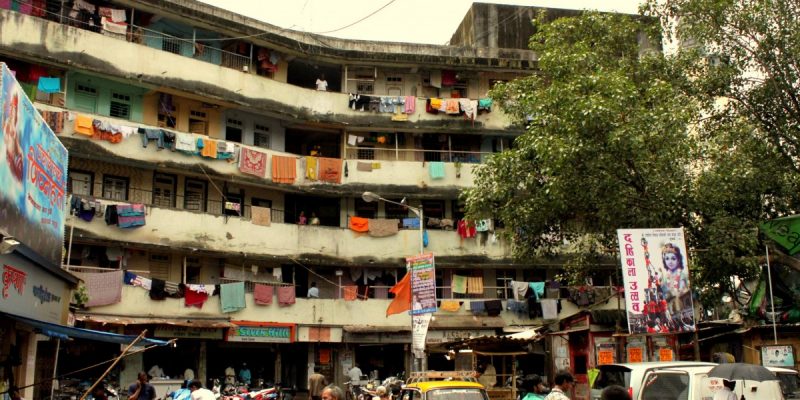Of all the stories embedded in the palimpsest that is contemporary Mumbai, perhaps some of the deepest are stories of community living. The wadis and padas, historical villages over which the city rose have been mentioned by city historians and researchers in functional, even abstract terms, and we have probably seen more images of their urban quaintness that we have heard life experiences from those living there. Stereotypes are often resorted to as a means of instant recall.
It is therefore a fine thing to find these spaces as protagonists in new fiction about the city. When narrated with sensitivity and humour, a certain self-effacement and honesty, stories about an embedded=ment in a specific communitarian context provides as much learning about the city as hardcore research.

Jane Borges
Bombay Balchao
Tranquebar, November 2019
Two new books of fiction fit the bill. The first is Bombay Balchao (Tranquebar, Westland) by Jane Borges, which reintroduces us to Cavel, a small Goan and Mangalorean Catholic enclave to the east of Chira Bazaar. The other novel is Coming Back to the City: Mumbai Stories (Speaking Tiger) by Anuradha Kumar spread over a larger footprint located around the erstwhile Jupiter Mills in Lower Parel. Kumar’s book is set in the contemporary, with nods to how the area today came to be, while Borges uses the device of setting her stories (about the same group of characters) at various times from the 1940s to the first decade of the millennium.
While the Catholic communities in Bandra Ranwar and Chimbai have been written about, Bombay Balchao is a string of short stories set in an enclave in southern Mumbai over nearly 70 years, encompassing city-changing events like the 1944 Fort Stikine explosion to bootlegging during the days of prohibition, which empowers a female resident. Members of the Coutinho family live and age in the D’Lima Street in Cavel. Their neighbours and friends from the same parish worship or abstain, bicker, fall in love, procreate, elope, abandon, rebel, fight, make up and come to terms with the changing city. Their homes are a few walk-up buildings set close enough that neighbours can eavesdrop, with floors thin enough to carry sounds across them.
These largely timber-framed buildings with deep sloping roofs and overhanging eaves once formed the original Bombay vernacular, an architecture that predominated in this city that was and is part of the Konkan:
“The Coutinho Home, like the other flats in Bosco Mansion, was an architectural marvel. It had a warren of rooms, each with two large doors – one that led to the bathroom or balcony, and the other to a drawing room or a bedroom. It was a maze that took some time to get accustomed to. Space was never wanting here, and the sprawling arched windows, two for every room ensured that the house was bathed in light during the day.”
Borges brings into play the migrant experience, ubiquitous to most citizens of Bombay and the varieties of accommodations that were once available to them:
“The furniture was vintage, dating back to when the father of Alfred Coutinho, Sebastiano Marcus, had moved into this newly built structure in 1913 with his wife Maria and their four children after arriving on a steamboat from Goa. He had rented the space from the Catholic Fellowship Trust, giving a substantial down payment for the tenancy rights. It had been their home from that day on.”
A 2007 study by CRIT, an urban research group identified 21 different housing types in Mumbai. Most of these have since subsumed under the larger rubric of ‘redevelopment’ and the aspirational drive towards self-ownership. Nevertheless, stragglers remain, and one such is beautifully evoked by Borges – the Bombay kudds in Jer Mahal across the Metro Cinema: “chummeries started by the ingenious Goans in the mid-nineteenth century – were the mainstay of many migrants, especially the bachelors. The humble lodgings assured at least a roof above their heads, while they tottered and struggled in the new city. Run by Goan clubs, each attached to a village back home, they offered membership for just a few annas. The amenities were basic … But the goodwill that existed among the members compensated for everything else.” It is important to remember that Bombay for a very long time was a city of rentals and tenancy, and this acted as a sponge to every new incoming aspirant.
Anuradha Kumar characters represent the upstairs/downstairs equivalent of the city. The ‘downstairs’ characters – homemakers, domestic workers, political cronies, and former unionists live in the leftover chawls that once housed textile mill workers. Former mill-lands are now upmarket work and recreational spaces occupied by the ‘upstairs’ characters who are both affluent and politically powerful. The circumstances in Kumar’s stories have this diverse mix vying not for homes but for agency in an increasingly harsh and unforgiving city.

Anuradha Kumar
Coming Back to the City: Mumbai Stories
Speaking Tiger, October 2019
Bridging the divide is the artist Dr Pankaj Joshi who runs both a clinic as well as an art practice. Mumbai is his muse. He paints the city, reflecting its changing landscapes like a brush-wielding Dorian Gray whose paintings get uglier as shining edifices rise. Mumbai is now in a post-industrialised, post-planning and half-globalised state, where, as a result of policies related to the mill-lands citizens scrounge for homes in shabbily built-up accommodation in leftover spaces:
“Critics had noted the muted darkness in Dr. Joshi’s recent paintings of the city. He ignored the glitzy malls, the swanky showrooms that had now appeared in the first floors of old respectable buildings. He chose instead the city’s narrow lanes where old houses still jostled for space and kept their secrets … He chatted with the decrepit, the unwanted, who for a time had made a home there and painted all of this.”
While Dr Joshi’s paints the city from the level of the street as an eyewitness, Kumar provides another extreme perspective, equally telling on the manner urbanization functions today. Suhel Kolhatkar, an affluent NRI takes off in a hired helicopter from the roof of a Walkeshwar high-rise to look down at Mumbai, from the sky: “The closer Suhel flew; he saw the unfinished top storeys of the new buildings deliberately left incomplete in an obvious flouting of the government’s mandated construction indices … As the builders illegally added more storeys, the matter would go to court, where the builders would make much of the fact that public money was already invested in these buildings.” The unfinished city emerges at both ends of the scale: “Everywhere tall high rises were going up, the city’s new modernity held in place by scaffolding visible all around her.” We can feel the oppressive nature of urban living preying upon all who live in it, irrespective of social class and economic circumstance.
Both books ‘bookend’ the urban experience of Mumbai; seen from the very acute points of view of its residents. The architect Christopher Alexander describes a good city as a ‘mosaic of sub-cultures’ in his A Pattern Language, a canonical survey of archetypal patterns of architecture and urbanity identified from the lived, rather than the designed experience. The subcultures he describes are ghettos, but in their finest sense – localities where residents of one identifiable community reside cheek by jowl with a localities where people of another identifiable community live; a fairly good description of Bombay from the early to mid-twentieth century. Such an environment, says Alexander: “fosters mutual support and a strong sense of shared values, where individuals can grow”. The breakdown of this mosaic into a more monochromatic form of living that is the result of real estate speculation and ‘redevelopment’ results in a “homogenous and undifferentiated character of modern cities that kill all variety of life styles and arrest the growth of individual character”
Also Read: How Mumbai’s Underprivileged Have Been Bundled out of the Housing Market
The residents of Cavel, as the stories move to the present day, are not immune to this impending breakdown: “The century-old Bosco Mansion had been in the eye of a storm ever since the residents of Lobo, afraid that their decrepit building would soon give way, agreed with their landlord to sell the property to a developer – a notorious goon. They settled amicably, but for peanuts. While a massive forty-storey building was expected to come up where Lobo Mansion used to be, the former residents accepted homes half the size of their original flats in the suburban area of Malad, nearly thirty kilometers from Cavel.” For those located in the heart of what once was Bombay, Cavel near Chira Bazaar or Jupiter Mills in Lower Parel, the options are simple: put up in cramped redeveloped tenements with many new neighbours or leave to find a new life in far-flung suburbs.
When the dispersal of subcultures is complete, what remains is a city that leaves its citizens completely alienated, where day to day living is an unfulfilling but necessary end in itself. Kumar describes these circumstances vividly:
“It was a city given over to a hunger, a race between everyone to get ahead, and a desperation because they knew it was all over already. If you were always travelling by train, always keeping an imaginary account in your head, you didn’t have the time or space to even think over your next step… Space for yourself. This city didn’t give you that. And those who had even a modicum of space were the ones eager to stay ahead, greedy to always take more than their rightful necessary share.”
Both Jane Borges and Anuradha Kumar’s books are readable and immersive accounts of the city as it has come to be. Both leave us nostalgic and anxious in equal measure, but lend us another way to appreciate and perhaps even come to terms with our urban angst. I am glad that the Bombay/Mumbai bookshelf grows in its own mosaic of subcultures, Borges and Kumar can now comfortably sit cheek by jowl with Amrita Mahale, Sampurna Chattarji, Jerry Pinto, Kiran Nagarkar, Vikram Chandra and Rohinton Mistry.
Mustansir Dalvi is an anglophone poet, translator and editor. He teaches architecture in Mumbai.




